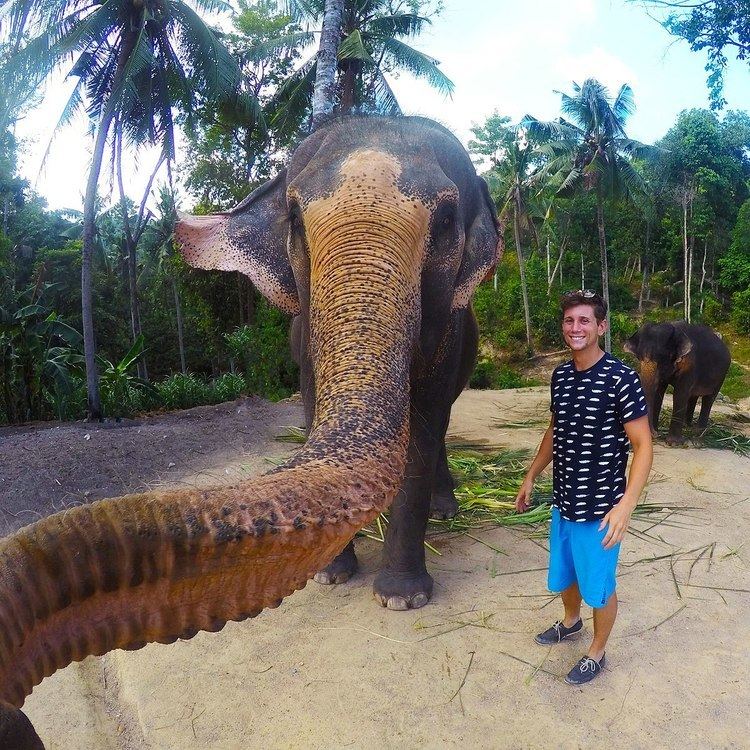 | ||
Animal-made art is art created by a non-human animal. Animal-made works of art have been created by apes, elephants, cetacea, reptiles, and bowerbirds, among other species.
Contents
Painting primates
During the late 1950s, biologists began to study the nature of art in humans. Theories were proposed based on observations of non-human primate paintings. Hundreds of such paintings were cataloged by Desmond Morris. Morris and his associate Tyler Harris interpreted these canvas paintings as indications of an intrinsic motivation toward abstract creativity, as expressed through an exploration of the visual field and color. Many of these painters progressed over time by expanding or contracting the area of paint coverage, the horizontal or vertical stroke relationships, and even the development of content.
Monkey paintings were exhibited in many modern art museums during an early 1960s fad. The cultural and scientific interest in monkey painting diminished steadily and little note is taken today.
Painting elephants
Elephants in captivity have been trained to paint as a form of zoo environmental and behavioural enrichment. An example of this is seen at Melbourne Zoo. However, research published in 2014 indicated that elephants gain little enrichment from the activity of painting apart from the positive reinforcement given by zookeepers during the activity. The scientists concluded that the "benefits of this activity appear to be limited to the aesthetic appeal of these paintings to the people viewing them". The elephants draw the same painting each time and have learned to draw it line-for-line. It has been alleged that cruelty is involved in some tourist destinations where elephants are trained to paint.
Painting dolphins
In some dolphin shows, educated dolphins and beluga whales paint with brushes. The Institute for Marine Mammal Studies have taught several of its dolphins to paint.
Painting rabbit
In 2014, Bini the Bunny showed the world that rabbits can paint also. Given a blank canvas to work with, Bini grabs a brush with his mouth and begins adding colors to create an abstract work.
Copyright issues
The copyright to an artistic work is typically held by its author. In cases where the artistic work was created by an animal, intellectual property analysts Mary M. Luria and Charles Swan have argued that neither the human who provides the equipment used to create the work, nor the human who owns the animal itself (when applicable), can hold the copyright to the resulting work by the animal. In these cases, the animal's work was not an intellectual creation of the humans, and copyrights can only be held by legal persons—which an animal is not.
The question of ownership of copyright for photographs created by animals was tested in the monkey selfie case, in mid-2014. Equipment owned by nature photographer David Slater was used by a Celebes crested macaque in Tangkoko Nature Reserve in Indonesia to take a series of self-portraits. Slater claimed copyright over the image, arguing that he had set up the situation. Other individuals and organizations, however, argued that the photographs, as the work of a non-human animal (and thus not the work of a legal person), were public domain. Slater stated that the upload of the images to Wikimedia Commons, a free media repository, had cost him more than £10,000 in lost income; he unsuccessfully attempted to have the media removed. In August 2014, the United States Copyright Office clarified their rules to explicitly state that items created by a non-human cannot be copyrighted, and lists in their examples a "photograph taken by a monkey", which would appear to reference this case.
